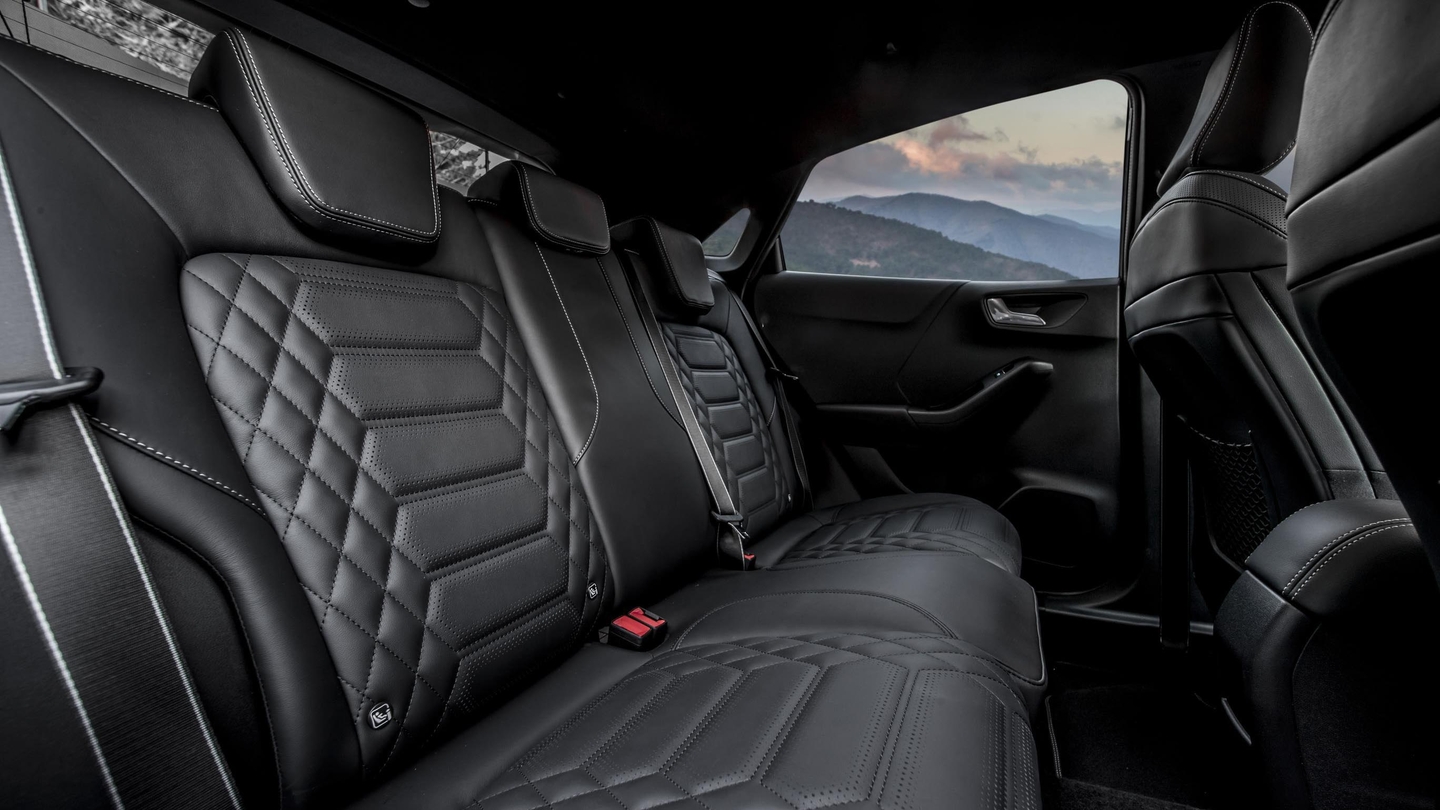
Ford Puma engines, driving and performance
Gallery
How does the Ford Puma drive?
Brilliantly. The Puma’s built on the excellent Fiesta platform, so it inherits that car’s sense of fun in corners. The steering is fast to respond to your inputs, and you get a great sense of grip from the front tyres – in short, the Puma encourages you to attack twisty roads in a way no other small family SUV does.
The Puma ST is on another level. The suspension is firm enough to jiggle you in the seat, but the trade-off is hooligan handling and the ability to tighten your cornering line by lifting off the throttle in a corner before using all 200hp to storm down the next straight. It’s not quite as agile and playful as a Fiesta ST, but it’s a compelling performance car all the same.
Is the Ford Puma comfortable?
Most Puma models get stiffer ‘sports’ suspension than the Titanium model, and this does make bumps shudder through to the cabin more than in something like a Renault Captur. That said, the Puma’s still unlikely to get on your nerves, and it’s a reasonably comfortable car in which to bash out motorway miles. It feels stable and assured, but there’s a bit of wind noise off the door mirrors at 70mph. Again, the ST model does wobble you about, even at motorway speeds.
What’s the best Ford Puma engine to get?

We’d go for the Puma with the 155hp 1.0-litre EcoBoost petrol engine. It feels notably more punchy than the 125hp alternative while returning similar fuel economy of 45mpg vs 52mpg for the less powerful engine.
The 125hp engine is absolutely fine and is a perfect town companion, but you have to work it a bit harder than you’d like when getting up to motorway speeds.
The Puma ST originally came with a 200hp 1.5-litre engine that delivers impressive performance, but only came with a manual gearbox. In early 2023 Ford introduced an automatic version of the ST alongside the manual, but this uses a slightly disappointing 170hp version of the 1.0-litre engine. From 2024, it’s the only one available. For full-fat ST performance, pick the 200hp manual version.
All Pumas use a timing chain rather than a belt.
Of course, if you want to skip the engine altogether, the Ford Puma Gen-E has now entered the fray. It makes the most of a small battery – high efficiency enables a range of over 250 miles and temptingly cheap running costs if you can charge at home. The Gen-E's a little heavier than the petrol Puma, but it's still very fun to drive, and the instant power of the 168hp motor means it's quicker off the line than a petrol one, too.
Ford Puma performance
The slowest-accelerating Puma is the 1.0-litre Ecoboost with 125hp and without mild-hybrid (mHEV) technology. This’ll get from 0-62mph in 10.2 seconds with the automatic gearbox or 10.0 with a manual transmission. Add the mild-hybrid tech and the acceleration time drops to 9.6 seconds for the automatic Puma, and 9.8 for a manual.
Step up to the 155hp engine and you can expect a 0-62mph time of 8.9 seconds for the manual Puma and 8.7 for the auto, while the range-topping 200hp manual Puma ST will dash to 62mph in 6.7 seconds. The 170hp automatic Puma ST takes 7.4 seconds.
The Gen-E splits the standard and ST models, taking eight seconds to hit 62mph from a standstill.
































.jpeg&w=1440&q=75)


















.jpg&w=1440&q=75)



